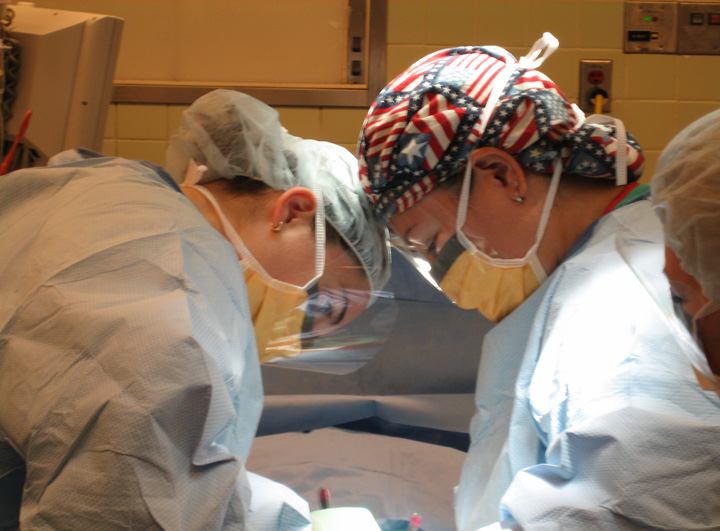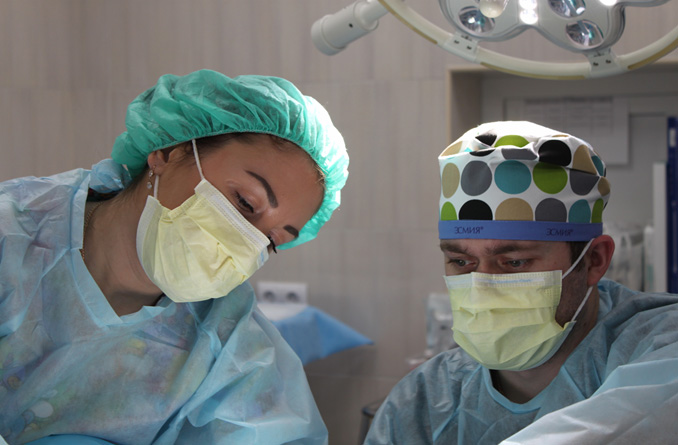As hospitals nationwide face the ongoing challenge of managing costs while achieving improved quality outcomes, those best positioned for success in this competitive healthcare environment will give increased focus to patient safety, quality, and cost in providing value-based care. The Surgical Affiliates Surgical Hospitalist Program provides hospitals with a powerful acute care surgery model with published, peer-reviewed quality outcomes that raises the level of hospital performance and achieves cost savings that are proven and sustained.
Generating a Program of Savings Based on Documented, Peer-Reviewed Quality Outcomes
Although hospitals make an initial investment when implementing a surgical hospitalist program, the return on investment (ROI) can be substantial and typically offsets the cost of the program. We’re pleased to offer the Acute Care Surgery Program Impact Calculator, an easy-to-use tool designed to allow hospitals to quickly determine the potential ROI impact that can be achieved by implementing our acute care or trauma surgical hospitalist programs. Based on a few specific data points entered by the user, the Acute Care Surgery (ACS) Program Impact Calculator utilizes documented, peer-reviewed quality outcome data to immediately generate an estimated program of savings in three key metrics – emergency surgical case volume, length of stay (LOS), and case mix index (CMI).
Specifically, the ACS Program Impact Calculator generates a concise, one-page summary that provides an overall projection of the cost savings your hospital could achieve by implementing our surgical hospitalist programs. Also, the report provides a comparison of current and expected data points for emergency surgical case volume, length of stay (LOS), and case mix index (CMI) as well as a projected ROI impact figure for each of the three metrics. The projected savings generated with the implementation of our surgical hospitalist programs are achieved while maintaining superior quality metrics, including Center for Medicare and Medicaid Services (CMS) performance in the 92nd percentile for quality of care at a mean cost. The data and calculations utilized on the ACS Program Impact Calculator are based on industry standards, past Surgical Affiliates case study results, and published information.
Achieving a Robust ROI with Improvements in Key Metrics
The robust ROI achieved with our surgical hospitalist programs is derived from improvements in three key cost-related metrics, namely emergency surgical case volume, length of stay (LOS), and case mix index (CMI). While the expected improvements in these areas are well documented and significant, the financial impact often extends far beyond these in providing hospitals a competitive advantage in improved performance and efficiencies throughout the organization.
Emergency Surgical Case Volume
In providing hospitals with a dedicated team of board-certified surgical partners providing 24/7 emergency general surgery care, our surgical hospitalist programs experienced an increase in surgical volume. With a highly qualified team in place to provide emergency surgical support, operations are performed more quickly and are no longer deferred until elective cases or clinic patients are completed. Also, the accessible, high quality trauma and acute care surgery programs we establish enable hospitals to create a culture of “yes,” typically increasing the number of patients transferred into the hospital for emergency surgeries and reducing the need for local patients to be transferred to other facilities to receive treatment for serious conditions requiring prompt surgery.
Length of Stay
Decreased length of stay is a key improvement directly related to the availability of 24/7 acute surgical care that is the cornerstone of our surgical hospitalist programs. Because emergency patients undergo surgery without delays, throughput within the hospital is typically improved and the availability of beds increases. Inherent in the improved length of stay metric is increased quality of care, as eliminating surgical delays reduces complication rates and improves outcomes for patients. Improvement in the length of stay metric is well documented in peer-reviewed data from a five-year study of a Surgical Affiliates Surgical Hospitalist program with Sutter Memorial Medical Center published in the Journal of the American College of Surgeons (JACS).
Case Mix Index (CMI)
A core benefit of our surgical hospitalist programs is that we provide highly qualified surgeons who manage patients as a team in accordance with evidence-based guidelines, reducing variations in care and helping to standardize best practices across our programs. This standardization of care, in concert with the requirement that our surgeons provide documentation that supports the resources patients require, typically leads to significant improvement in CMI. Most of our programs achieve an improved CMI to 2.09, which is demonstrated in the peer-reviewed JACS study and also represents the average CMI of our current surgical hospitalist programs.
If you have questions about the results generated by the Acute Care Surgery Program Impact Calculator, or you’d like to learn more about our acute care surgery model and how it can help your hospital achieve improved quality outcomes and sustained cost savings, contact us today for a free program analysis consultation.












Latest posts